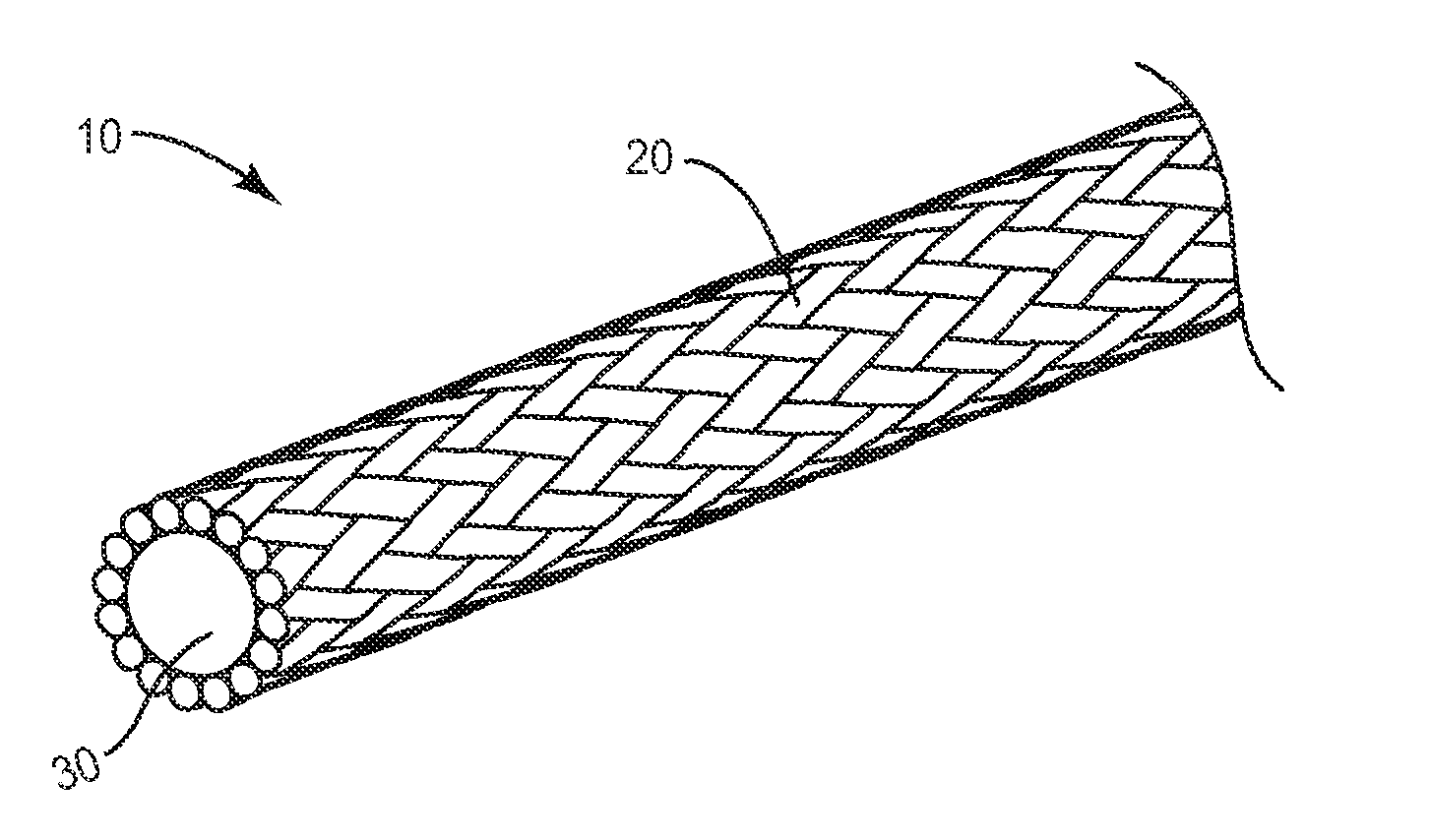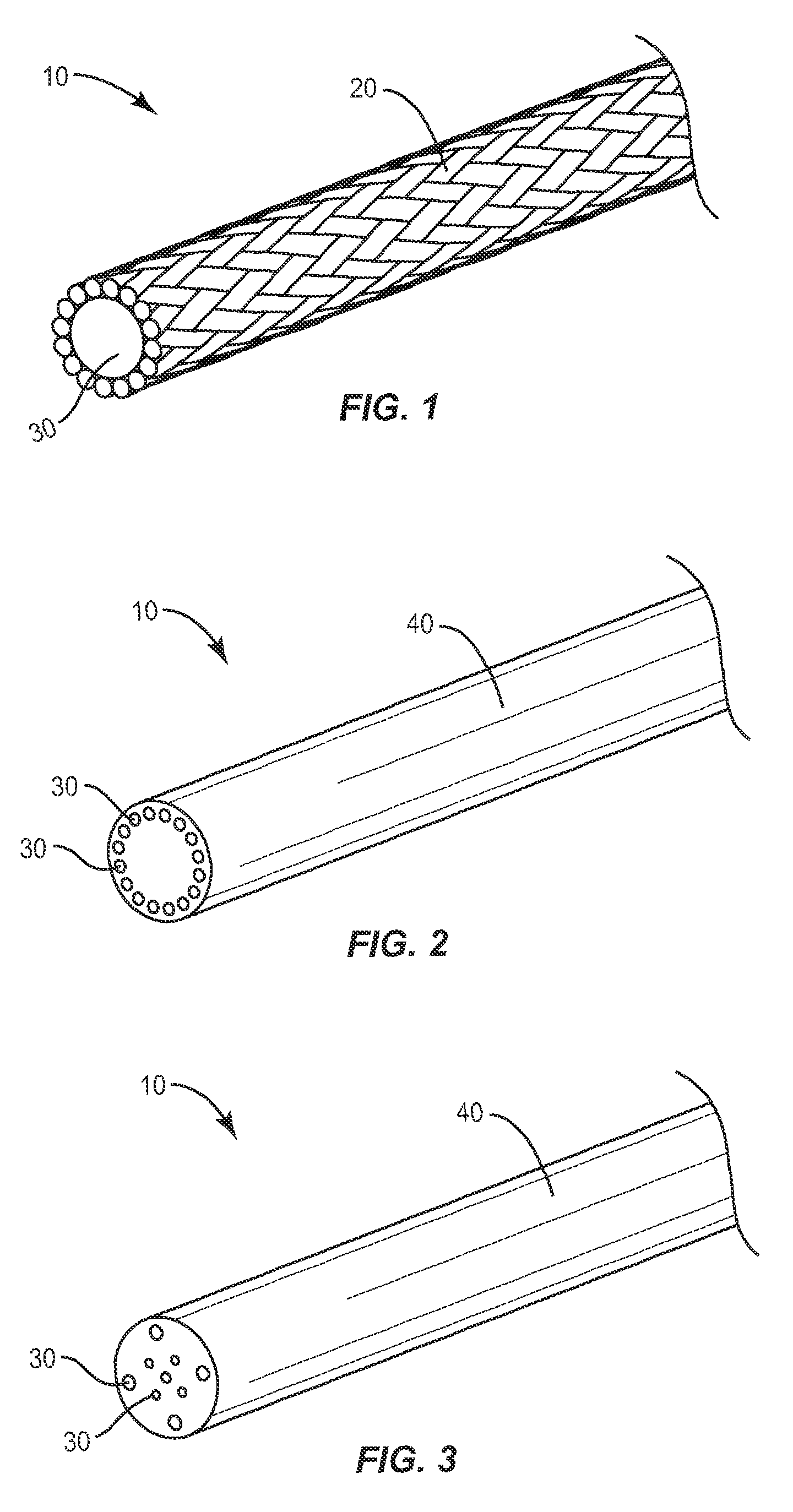Pultrusion process for preparing composites having low percentage of fibers and articles made from same
a fiber reinforced polymer and composite technology, applied in the field of composite structures, can solve the problems of pain, nerve damage, partial or complete loss of mobility, and failure to relieve the symptoms of these disorders, and achieve the effect of increasing flexibility and reducing melting poin
- Summary
- Abstract
- Description
- Claims
- Application Information
AI Technical Summary
Benefits of technology
Problems solved by technology
Method used
Image
Examples
Embodiment Construction
[0015]The present disclosure provides a pultrusion process for producing fiber-reinforced thermoplastic or thermoset composite material having about 10% to about 45% by volume of reinforced fibers that has increased flexibility over composite material made according to existing standard pultrusion methods having much higher percentage by volume of reinforcing fibers.
[0016]The present invention may be understood more readily by reference to the following detailed description of the invention taken in connection with the accompanying drawing figures, which form a part of this disclosure. It is to be understood that this invention is not limited to the specific devices, methods, conditions or parameters described and / or shown herein, and that the terminology used herein is for the purpose of describing particular embodiments by way of example only and is not intended to be limiting of the claimed invention. Also, as used in the specification and including the appended claims, the singu...
PUM
| Property | Measurement | Unit |
|---|---|---|
| temperature | aaaaa | aaaaa |
| melting point | aaaaa | aaaaa |
| mechanical properties | aaaaa | aaaaa |
Abstract
Description
Claims
Application Information
 Login to View More
Login to View More - R&D
- Intellectual Property
- Life Sciences
- Materials
- Tech Scout
- Unparalleled Data Quality
- Higher Quality Content
- 60% Fewer Hallucinations
Browse by: Latest US Patents, China's latest patents, Technical Efficacy Thesaurus, Application Domain, Technology Topic, Popular Technical Reports.
© 2025 PatSnap. All rights reserved.Legal|Privacy policy|Modern Slavery Act Transparency Statement|Sitemap|About US| Contact US: help@patsnap.com


